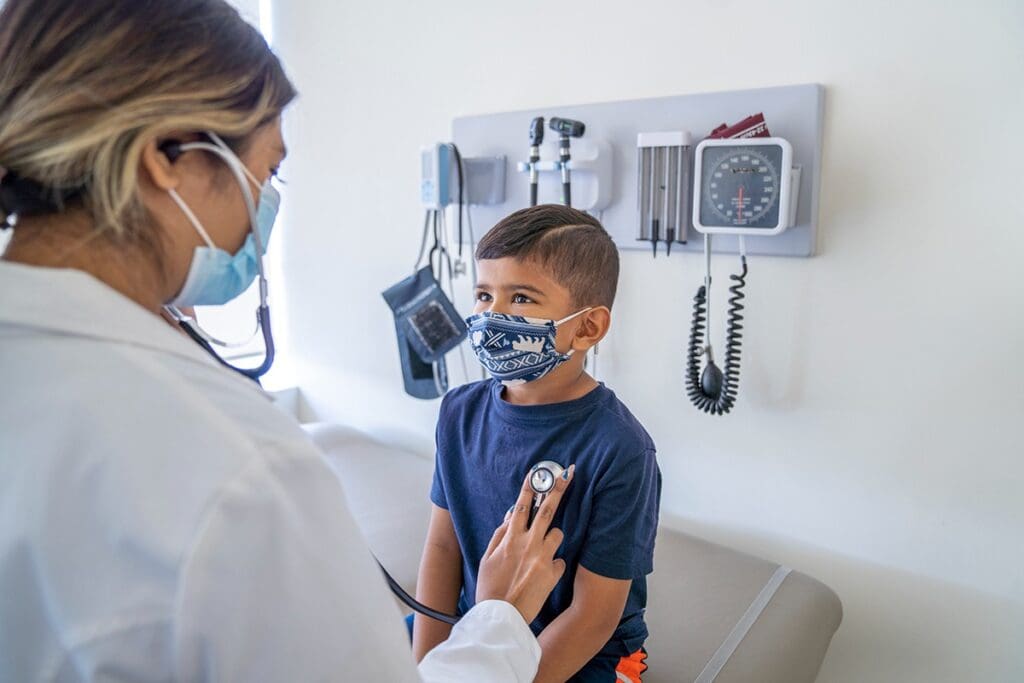Last Updated on November 24, 2025 by

The pediatric airway is very vulnerable to blockages. This is because it is much smaller than an adult’s airway. This size difference is a big risk factor.
In young children, their tongues are bigger in the throat. This makes it easier for blockages to happen. Even a small swelling can block air.
It’s important to know these details. They help doctors and nurses give the best care in emergencies and regular visits.
Understanding the pediatric airway is key to managing it well. It has features that make it different from adult airways. These differences make it more prone to blockages.

The pediatric airway is smaller than the adult airway. This makes it harder to breathe because of anatomical resistance. Even small changes in size can cause big problems with breathing.
This is important to remember when working with pediatric airways. It affects how easy it is to breathe and intubate.
Pediatric patients have bigger tongues compared to their mouths. This can block the airway, making breathing hard. It’s a big problem when they’re sleepy or lying down.
The larynx in young children is higher and more forward than in adults. This makes intubation and airway management harder. It changes how we approach intubation.
In kids under 10, the airway is narrowest below the glottis, at the cricoid cartilage. Healthcare providers need to know this to manage pediatric airways well.
It’s key to know the critical narrowing points in the pediatric airway anatomy for good airway management. The pediatric airway has unique features that make it more prone to blockages.
The cricoid cartilage is the narrowest part of the pediatric airway. Its small size makes it very vulnerable to blockages. This is a big deal in managing pediatric airways, as even a little swelling or blockage can greatly affect breathing.
Poiseuille’s equation shows that airway resistance goes down as the airway radius goes up. This means a small decrease in airway radius can have big effects on breathing.
The “16-fold rule” shows how a small change in airway radius can greatly affect airflow. Even a 1mm reduction in airway radius can increase resistance to airflow by up to 16-fold in infants. This shows how important it is to manage pediatric airways carefully.

When we compare pediatric and adult airway dimensions, we see big differences. Pediatric airways are smaller and have different shapes from adult airways. For example, the pediatric larynx is higher and more forward, and the tongue is bigger, which can affect breathing.
Healthcare providers need to understand these differences to manage pediatric airways well and avoid problems. By knowing the unique challenges of pediatric airway anatomy, we can improve care and outcomes for patients.
The pediatric airway has several weaknesses that make it more likely to collapse. These issues stem from the differences in structure between pediatric and adult airways.
The trachea in kids is shorter and more flexible than in adults. This makes it more likely to collapse under certain conditions. This floppy airway is very prone to blockages, which can happen during sedation or anesthesia.
The tracheal structure in kids is a big deal when it comes to airway care. Its short length and flexibility mean that even a little pressure or change in position can cause blockage.
When kids are sedated or under anesthesia, the muscles that keep the airway open relax. This makes the risk of collapse even higher. The unique shape of the pediatric airway makes careful management very important.
It’s key to watch out for airway collapse in kids under sedation or anesthesia. To lower this risk, we need to monitor them closely and keep the airway open with the right positioning.
Putting a kid in the supine position can make airway collapse more likely. The sniffing position, which involves neck flexion and head extension, is better for keeping the airway open in kids and babies.
It’s vital to understand how position affects airway openness. We should be careful when putting kids in the supine position. Using the sniffing position can help keep the airway open.
It’s important to know how airway obstruction happens in kids. This knowledge helps us take better care of them.
Infants breathe mainly through their noses until they are about 5 months old. Any blockage in their nose can cause big breathing problems. This makes them very likely to have airway issues.
For example, if a baby’s nose is stuffy, it’s hard for them to breathe. This shows how important it is to keep their noses clear.
Kids need more oxygen than adults because they have higher metabolic rates. This means they can lose oxygen fast if their airway is blocked. Quick action is key.
The need for more oxygen and nasal breathing makes kids more likely to get hypoxia fast. This can get worse quickly if not treated right away.
Knowing these facts helps doctors and nurses prepare for problems. This way, they can give kids the best care possible.
Pediatric airway challenges often get worse due to specific health issues. Some conditions can really affect the airway, making it more likely to get blocked.
Big tonsils and adenoids can block the airway, mainly in young kids. This can make breathing hard, even when they’re sleeping. It might lead to sleep apnea.
When tonsils and adenoids grow too big, they can block the airway. This makes it harder for air to get through. It increases the effort needed to breathe.
Respiratory infections are common in kids and can swell the airway. This swelling makes the airway even smaller. It raises the chance of airway blockage, more so in kids with other health issues.
Diseases like bronchiolitis and croup can cause a lot of swelling and inflammation. This can lead to serious breathing problems.
Certain birth defects, like tracheal stenosis or laryngeal webs, can change the airway’s shape and function. These defects can make breathing harder and might require special care.
It’s important to know about these birth defects early. This helps in giving the right care and lowers the risk of airway problems in kids.
Understanding the pediatric airway is key to effective management. At LivHospital, we follow global best practices. This ensures our patients get the best care possible.
The pediatric airway is different from adults. It’s smaller and more challenging to manage. Knowing this helps us provide better care, even for common issues like big tonsils and adenoids.
We aim to deliver top-notch care that meets international standards. Our team keeps up with new research in pediatric airway care. This way, we can offer the best strategies for our patients’ needs.
The pediatric airway is smaller and has a larger tongue. The larynx is higher and more forward. The cricoid cartilage is the narrowest part, making it more prone to blockages.
The smaller size means higher resistance to airflow. Even small blockages can greatly hinder breathing. This is due to the “16-fold rule,” which shows how a small change in airway size can greatly increase resistance.
The cricoid cartilage is the narrowest part of the pediatric airway. Its small size makes it very susceptible to blockages. This is a key factor in managing pediatric airways.
Infants must breathe through their noses. Any blockage can cause serious breathing problems. Their high oxygen needs mean they can lose oxygen quickly if their airway is blocked.
Enlarged tonsils and adenoids can block the airway. Respiratory infections can cause swelling that narrows the airway. Congenital anomalies can also affect the airway’s structure and function.
Knowing the pediatric airway’s unique features is key to preventing airway collapse. It helps healthcare providers manage pediatric patients safely. This knowledge is essential for anticipating and managing airway complications.
The supine position increases the risk of airway collapse, which is worse during sedation or anesthesia. Healthcare providers must consider this when caring for pediatric patients.
Pediatric airways are much smaller than adult airways. This highlights the unique challenges in managing pediatric airways. Understanding these differences is important for treating pediatric patients.
Subscribe to our e-newsletter to stay informed about the latest innovations in the world of health and exclusive offers!